Your Guide to Using a Gmail Shared Inbox for Customer Service
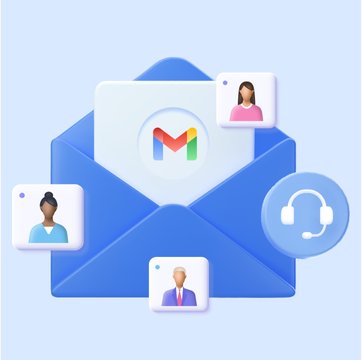
Table of contents
For decades now, email has been an effective tool for business communication. Nearly 63% of business professionals prefer to communicate using email.
That’s not all, according to recent reports, 72% of people consider email to be the preferred way to communicate with brands. What’s interesting is, even with an influx of promotional emails piling up in their inboxes, 38% of people would like to receive emails more frequently.
One thing’s for sure — whoever said email is dead, was wrong!
As a channel, email has certainly improved with time and is hands down the most used business communication tool today.
With email playing such a huge part in our day-to-day business lives, email service providers like Gmail, Outlook, and Yahoo — have stepped in with a range of features to help us manage our email accounts more seamlessly.
In many parts of the world, Gmail tops the charts as the most used email service.
We also see a growing number of small businesses using their Gmail inbox as a makeshift tool to handle group emails like customer support. The problem is, Gmail is not exactly great for team collaboration (we’ll get to this in a bit). You might end up having multiple teammates logging into the same account to manage customer queries.
Recommended Reading

With growing number of customer emails, multiple forwards, and CCs — sifting through customer requests in an over-crowded mailbox is not easy! As customer service requests stack up in your inbox, it’s important to find ways to help your support team stay on top of the huge volume of incoming emails.
In this quick guide, we tell you everything you need to know about using a Gmail shared inbox for customer service teams.
But first, we will walk you through Google Groups and its Collaborative Inbox. We will also tell you all about why these two functionalities simply don’t make the cut for customer support and how you can overcome these limitations.
Table of Contents
- Understanding Google Groups and its Collaborative Inbox
- Why Gmail’s native shared inbox isn’t cut out to handle support queries
- Top 8 benefits of using a Gmail-based shared inbox to deliver great customer service
- 1. Get everything done easily with an intuitive interface
- 2. Assign emails and track them to closure
- 3. Prevent your teams from sending duplicate responses
- 4. Respond to customer requests much faster
- 5. Be more organized
- 6. Manage team workload like a pro
- 7. Experience team collaboration at its best
- 8. Level up with real-time data
- Deliver exceptional customer service with Hiver’s shared inbox
Understanding Google Groups and its Collaborative Inbox
Alright, so by now we know that email rules the business world. Though it was initially meant for individual use, email has been picked up as a powerful business tool.
Now having said all that, how can customer support teams manage emails efficiently?
Google Workspace (formerly G Suite) offers a few options to for support teams to share a mailbox with multiple members.
Google Groups
First up, there is Google Groups for Business. Gmail account users can use Google Groups to collaborate and communicate with multiple people at the same time.
One of its top features is the ability to send emails to a group of people using a single email address.
This works wonders for email-intensive functions like customer support. Many businesses have often turned to Google Groups to manage support emails more seamlessly. Within this tool, a group email address like [email protected] or [email protected] can be mapped to a specific Google Group. Every member of the group can access all the emails sent to that Google Group.
Additionally, with the ability to start conversation threads, Google Groups can be the perfect forum for your teams to discuss customer queries, exchange ideas, and seek information from one another. You can even share documents, spreadsheets, media files and calendar invites to group participants.
While Google Groups may be great to share information, it was not built to manage team emails. Besides having a complex interface, Google Groups also lack many collaborative features to organize and track customer conversations.
Collaborative Inbox
Owing to the many limitations that Google Groups posed, Google released a new feature called Collaborative Inbox. Collaborative Inbox is an extension of Google Groups that was introduced to help teams coordinate better on team emails and messages. Owners and managers of a Google Group can convert the group into a collaborative inbox where members can easily track and assign conversations within the group.
Google Groups’ Collaborative Inbox lets you skip the hassle of CC-ing the email to the concerned employees. Members can easily sort and categorize customer conversations by adding labels to them based on their priority, type, or resolution status. By marking resolved queries as “complete”, they can even let other members know that no further action needs to be taken on that email.
One of the many drawbacks of the Collaborative Inbox has got to be its UI. Its interface was not built to function as an email client. Considering these are tools within Google Workspace, most users mistake the UI to be similar. There is a stark difference between Gmail’s standard UI and Google’s Collaborative Inbox’s UI. For starters, the interface is not very intuitive and users will have to spend time learning how to set up and use the tool. Besides that, every time you receive a support email in your Google Group, you will have to switch to the Collaborative Inbox — tracking emails this way can be quite the tussle when your email volumes spike up.
While the UI makes it hard to carry out customer support tasks seamlessly, there are also many collaboration lapses to deal with.
We have listed down the top reasons why Gmail’s native shared inbox with Google Groups and the Collaborative Inbox is not the best tool for customer service. Let’s dive right in!
Recommended Reading

Why Gmail’s native shared inbox isn’t cut out to handle support queries
Let’s face it, Google Groups and the Collaborative Inbox may be great tools, but they fail to perform well when it comes to team collaboration. From our experiences, we’ve come to know that these functionalities are just not good enough to manage your customer service efficiently.
With Google Groups and the Collaborative Inbox:
You cannot avoid duplicate responses
When you’re using Google’s Collaborative Inbox, there’s no way that you can tell if any of the group members have started working on a particular customer email. As such, teammates might end up sending multiple replies to the customer about the same issue — which pretty much screams “inefficient”.
It’s hard to keep track of who is doing what
If you need to look up who has replied to a particular email in the Collaborative Inbox, you will need to track it down manually from your sent items. Managers also lack the ability to see how their customer support agents are performing — it’s not easy to know who is performing well and who may need a little help in responding promptly to customers.
Team collaboration is hardly possible
In the absence of built-in features like notes within Google Groups and the Collaborative Inbox, it’s hard for customer support reps to communicate internally. Due to this, agents will be forced to move out of Gmail and take their conversation to another application. Or agents may forward emails to resolve queries and then end up replying to the customer in the same email thread. This can be a disaster as the customer will get to see all the internal conversations done between your agents to resolve the issue.
There are no insights and analytics to fall back on
Finally, when you’re running a business — it’s not just about replying to emails. You need to come up with solutions to problems that your customers are facing. Drawing insights from these customer interactions can help you in the long run to build better products that your customers actually want. When you’re using Google’s Collaborative Inbox, the number of emails received or sent is the only data you have. Native analytics and insights like the average response time or which agent is doing a commendable job at closing requests are unavailable.
Considering all the above issues with Gmail’s native shared inbox, it’s only prudent that you move to a shared inbox tool that streamlines your support workflows, and makes delivering superior customer service a breeze.
We’ve listed down the benefits of investing in Gmail-based shared inbox solution for your customer service team.
Top 8 benefits of using a Gmail-based shared inbox to deliver great customer service
A shared inbox solution eases the burden of all the grunt work that support teams need to deal with, giving them more time to focus on delighting customers with exceptional service.
Here are the top benefits that teams can enjoy when they use a Gmail-based shared inbox solution like Hiver:
1. Get everything done easily with an intuitive interface
With a Gmail-based shared inbox, there is no question of learning a whole new tool. You would be managing the shared inbox right from Gmail.
This way, your team can manage to get a lot more work done by focusing on their tasks and worrying less about learning how to use the tool.
With Hiver’s easy-to-use shared inbox, your customer service reps can start serving and delighting customers in a jiffy. Team members can work their way around the tool with minimal training.
2. Assign emails and track them to closure
Another much-loved feature of a Gmail-based shared inbox is email delegation – you can assign customer conversations instantly to support agents. This works out to be far simpler than forwarding emails to individual team members, which will only end up cluttering their inboxes.
Hiver lets you automate the process of assigning emails. It even allows you to track emails by their statuses – open, pending, or closed. This way everyone on the team knows which emails need to be actioned on priority.
By automating and streamlining the process of email assignment, support teams can improve efficiency remarkably – just like vacation rental company Vacasa did. With Hiver’s easy email assignment, Vacasa’s customer support team is able to respond to customers 60% faster.
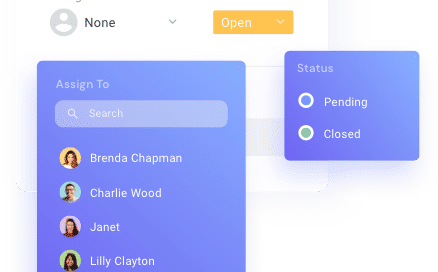
3. Prevent your teams from sending duplicate responses
A Gmail-based shared inbox provides complete transparency. It ensures that information is easily accessible to everyone on the team — which means your support reps know what their other team members are working on. This way you will not have to worry about two members of your team picking up the same email and responding to it twice.
With a shared mailbox solution like Hiver, you can avoid duplicate replies using collision alerts. With the help of Hiver’s real-time alerts, team members get a notification each time they’re looking at an email that someone else is replying to. This way, they can avoid sending duplicate (or worse conflicting) responses to customers.
Hiver’s collision alert feature helps freight forwarding and customs brokerage company Flexport prevent at least one incident of a duplicate response going to a customer each day.
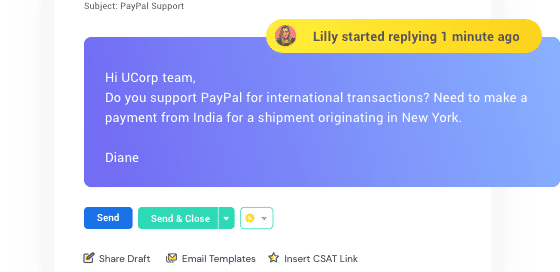
4. Respond to customer requests much faster
When you’re running a business that’s just starting out, managing support queries is easy. The real problem occurs when your business starts to scale, and customer requests begin to mount.
This is where email templates can help. They reduce the burden on your support team to type out responses to similar customer queries every time, while also remarkably improving response times!
A shared inbox solution like Hiver lets you convert your frequently sent email responses into templates. What’s more, with Hiver, you can even personalize these email templates at scale.
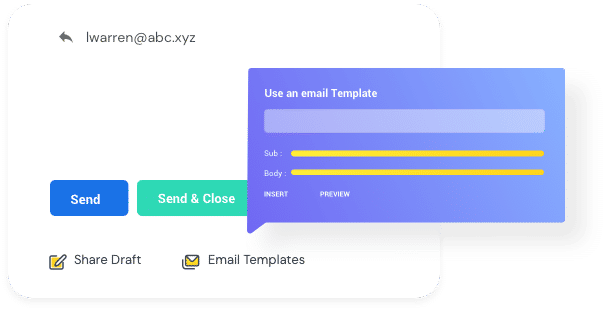
5. Be more organized
With the average office worker receiving nearly 121 emails in a day, important messages could easily be missed. Shared inboxes help your teams get more organized.
With the help of tags, you can categorize and even prioritize important customer communications. Doing this will not only take away the chaotic nature of support inboxes but also ensure that every customer request is attended to at the earliest.
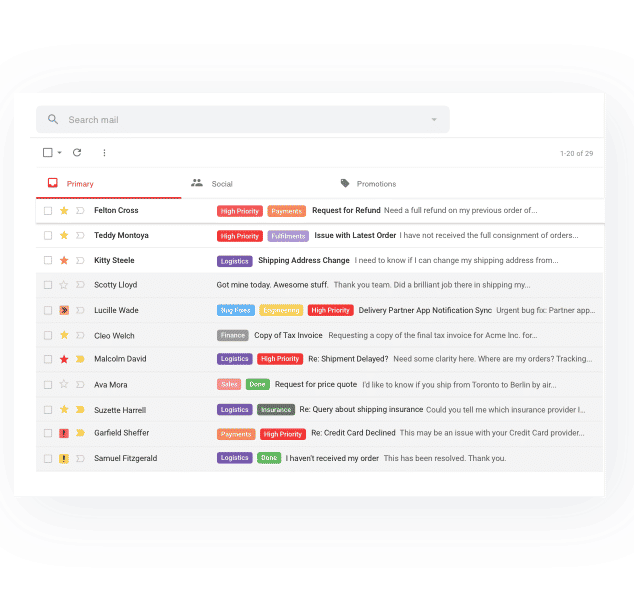
6. Manage team workload like a pro
Gmail-based shared inboxes come loaded with features to optimize your team’s workload and maximize their productivity.
Take Hiver’s Workload Distribution feature for instance. This feature gives you in-depth insights into how your team is placed with respect to their bandwidth and the workload they have.
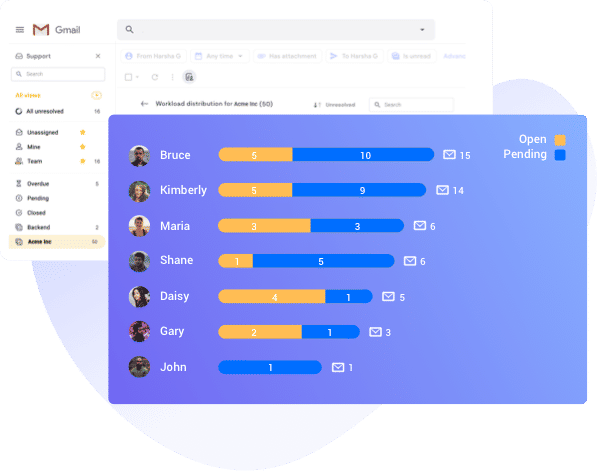
7. Experience team collaboration at its best
The best customer service teams work collaboratively and cross-functionally. As such, a Gmail-based shared inbox is a perfect solution for team collaboration and modern communication workflows.
With the Notes feature in Hiver, you can have private and contextual discussions with your team members right next to email threads, without needing to move the conversation to external tools. This enables seamless collaboration between teams, helping you to resolve customer queries a lot faster.
Further, with Hiver’s Notes, you also don’t have to worry about your internal conversations leaking to customers – a huge possibility if you’re using the archaic CCs and forwards to collaborate.

Recommended Reading

8. Level up with real-time data
Gmail shared inboxes are built to help you draw in-depth insights about your customer conversations. With a host of rich, real-time data, you will never again be in the dark about how efficient your teams are in resolving customer requests.
Hiver comes loaded with a range of reporting capabilities, which lets you track critical suport metrics like customer satisfaction score, response and resolution times and more. Hiver’s analytics help you measure your team’s overall performance, identify individual star performers and even keep a tab on conversation trends.
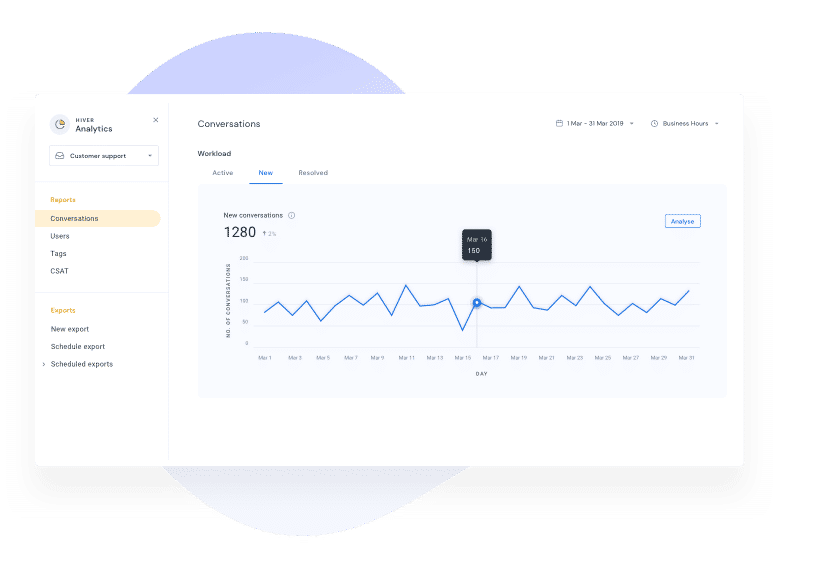
Deliver exceptional customer service with Hiver’s shared inbox
When you’re a fast-growing business, you need more than just Google Groups and the Collaborative Inbox to provide wow-worthy customer experiences.
The limitations that these Gmail features throw your way can be solved by moving to a shared inbox tool like that was specifically built for Gmail.
While you’re on the lookout for the best shared inbox tools in the market, you can do a 7-day free trial with Hiver – the world’s first customer service software designed exclusively for Google Workspace users.
Alternatively, you can request a demo with our team and we’ll show you how Hiver can help you streamline support workflows, speed up responses to customer requests received on email and live chat, enhance your productivity and collaborate with your teammates like never before.

































